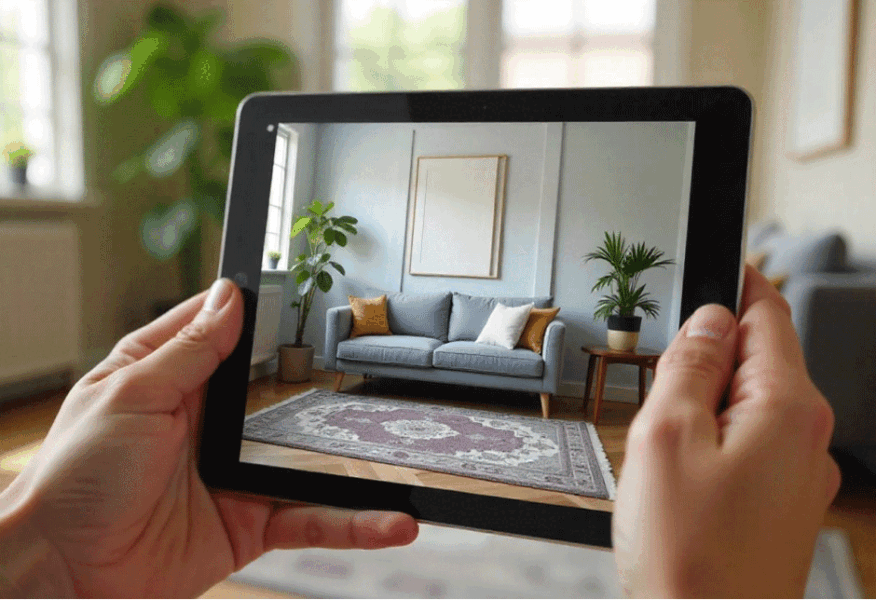The Business of AR Ecommerce: Smarter Shopping, Fewer Returns, Higher Profits

Imagine trying on clothes, visualizing furniture in your living room, or test-driving a new car model — all from the comfort of your couch. This is no longer science fiction; it’s the reality. Technologies like ar ecommerce are transforming online shopping by blending the digital and physical worlds, creating a more immersive, interactive, and profitable experience for businesses — and a more satisfying one for customers.
AR ecommerce refers to the integration of augmented reality technologies into online retail platforms, allowing consumers to view and interact with products in a more realistic and engaging way before purchasing. This technology not only bridges the sensory gap of traditional online shopping but also significantly reduces return rates, increases customer confidence, and boosts sales conversions — all essential elements for profitability in today’s competitive eCommerce landscape.
Bringing the Store to Your Living Room
The biggest limitation of online shopping has always been the inability to physically experience a product. Photos, videos, and even detailed reviews can’t fully capture how a couch fits in a living room, how a jacket hugs your frame, or whether a pair of sunglasses suit your face. AR ecommerce eliminates this guesswork by providing interactive 3D previews of products in real-world environments.
Take IKEA’s AR app, for instance. It allows users to place true-to-scale furniture in their own rooms using just a smartphone. This not only helps customers make more informed decisions but also creates a sense of excitement and confidence before the purchase. And when customers feel confident, they buy more — and return less.
Personalized Experiences Drive Deeper Engagement
AR doesn’t just let you see the product. It lets you experience it in your own personal context. For fashion retailers, virtual try-ons are a game-changer. Customers can now “wear” clothes, shoes, glasses, and even makeup via AR before adding them to their cart. Brands like Sephora and Warby Parker have pioneered these experiences, reducing friction in the decision-making process and making shopping more fun and experimental.
This personalization transforms eCommerce from a transactional process into an emotional journey. Shoppers don’t just browse anymore — they play, explore, and interact. These micro-moments of engagement significantly increase the time spent on websites and apps, which correlates directly with higher conversion rates and brand loyalty.
Reducing Returns, Increasing Satisfaction
One of the biggest pain points in online shopping is returns. In industries like fashion and furniture, return rates can climb as high as 40%. Each return costs time, money, and customer goodwill. But ar ecommerce is helping to change that.
When customers can visualize products in their environment or try them virtually, they’re far more likely to make a purchase that truly meets their expectations. That means fewer disappointments, fewer returns, and a happier customer base. In a study by Shopify, merchants using AR saw return rates drop by up to 40% — a powerful incentive for any business considering the investment.
A Competitive Edge in a Saturated Market
With the rise of dropshipping, print-on-demand, and global marketplaces, it’s harder than ever for eCommerce brands to stand out. AR offers a distinctive edge. It’s a novel, futuristic, and memorable experience that not every competitor offers — at least, not yet.
Forward-thinking brands that adopt AR early aren’t just offering better UX — they’re positioning themselves as leaders in innovation. This tech-savvy brand image appeals particularly to Gen Z and Millennial shoppers, who prioritize convenience, experience, and authenticity.
Seamless Integration and Accessibility
You might think that AR requires high-end hardware or expensive development — but that’s not the case anymore. Thanks to advancements in web-based AR and platforms like Apple’s ARKit, Google’s ARCore, and plug-and-play solutions from companies like Shopify, integrating AR into an eCommerce site is more accessible than ever.
Retailers can now add AR product viewers, virtual try-on tools, or even interactive guides directly into their websites or apps without requiring customers to download anything extra. The barrier to entry is lowering fast, which means the window to gain early-mover advantages is shrinking.
Looking Ahead: The Metaverse and Beyond
As the digital and physical continue to converge, AR is laying the groundwork for the next evolution in eCommerce — the metaverse. Imagine walking through a virtual mall with your avatar, browsing digital stores, trying on digital clothes that match your real-world measurements, and checking out with a wave of your hand. That’s the trajectory ar ecommerce is pushing us toward.
And it’s not just a futuristic dream — it’s already happening. Brands like Nike, Gucci, and Balenciaga are experimenting with virtual storefronts and digital fashion, showing us that the line between the real and the virtual is more blurred than ever.
Final Thoughts
AR ecommerce is more than a trend — it’s a paradigm shift. It enhances user experience, reduces costs, builds trust, and sets brands apart in an overcrowded marketplace. As the technology continues to evolve and adoption becomes more widespread, the retailers who embrace AR today will be the ones thriving tomorrow.
For businesses looking to future-proof their eCommerce strategy, the message is clear: the future is augmented. And it’s already here.


